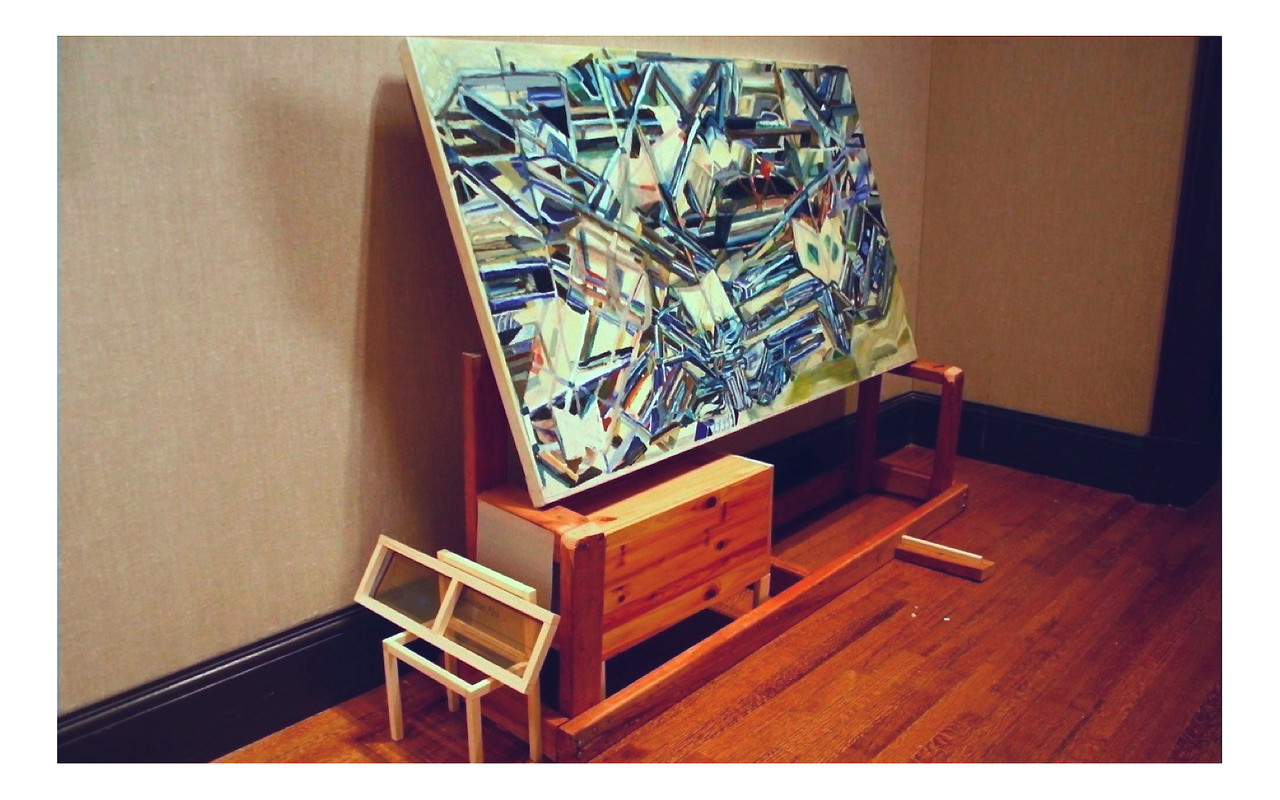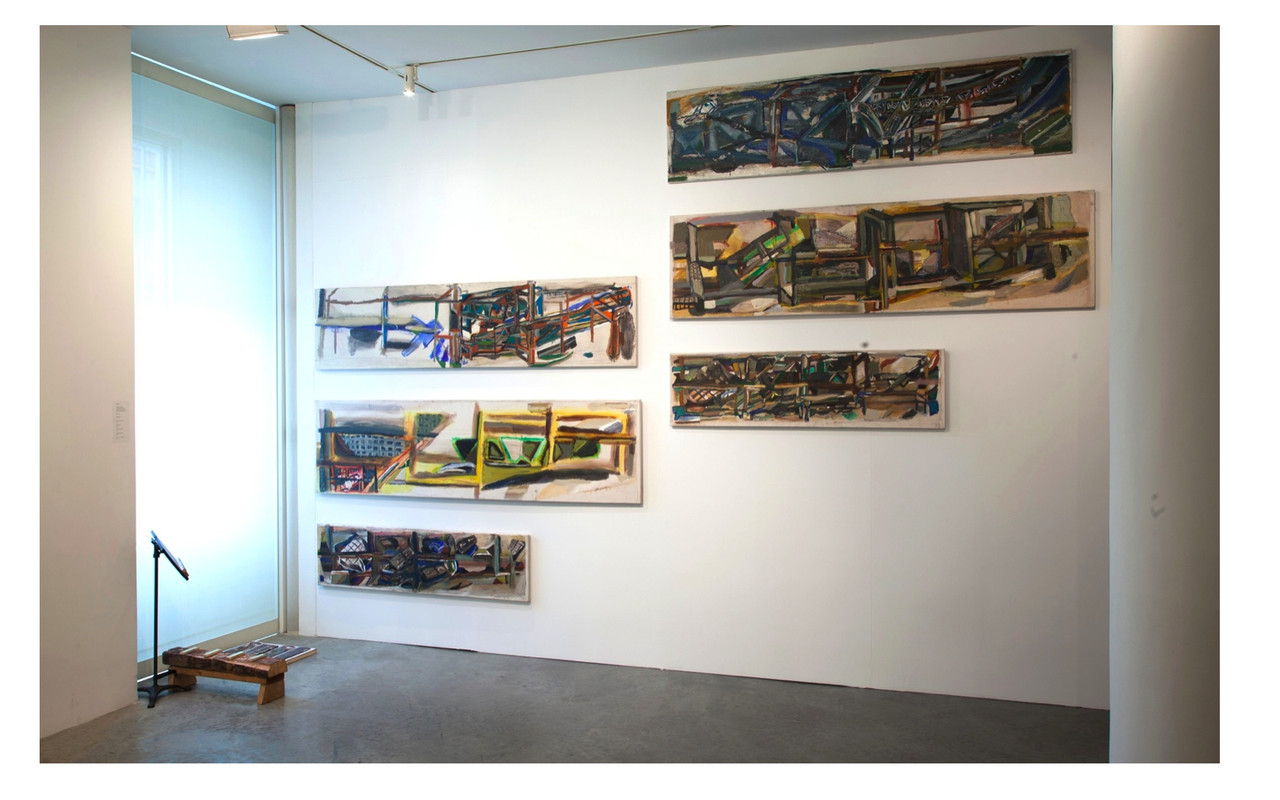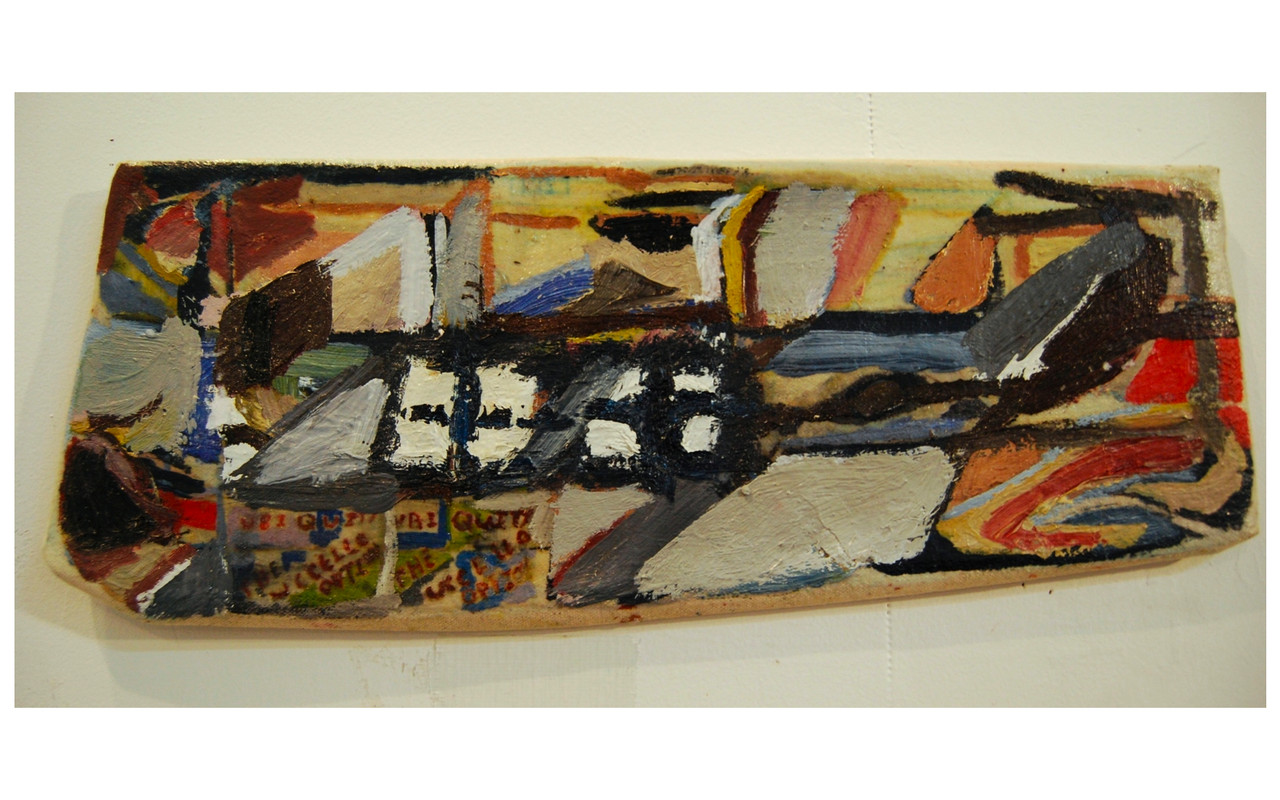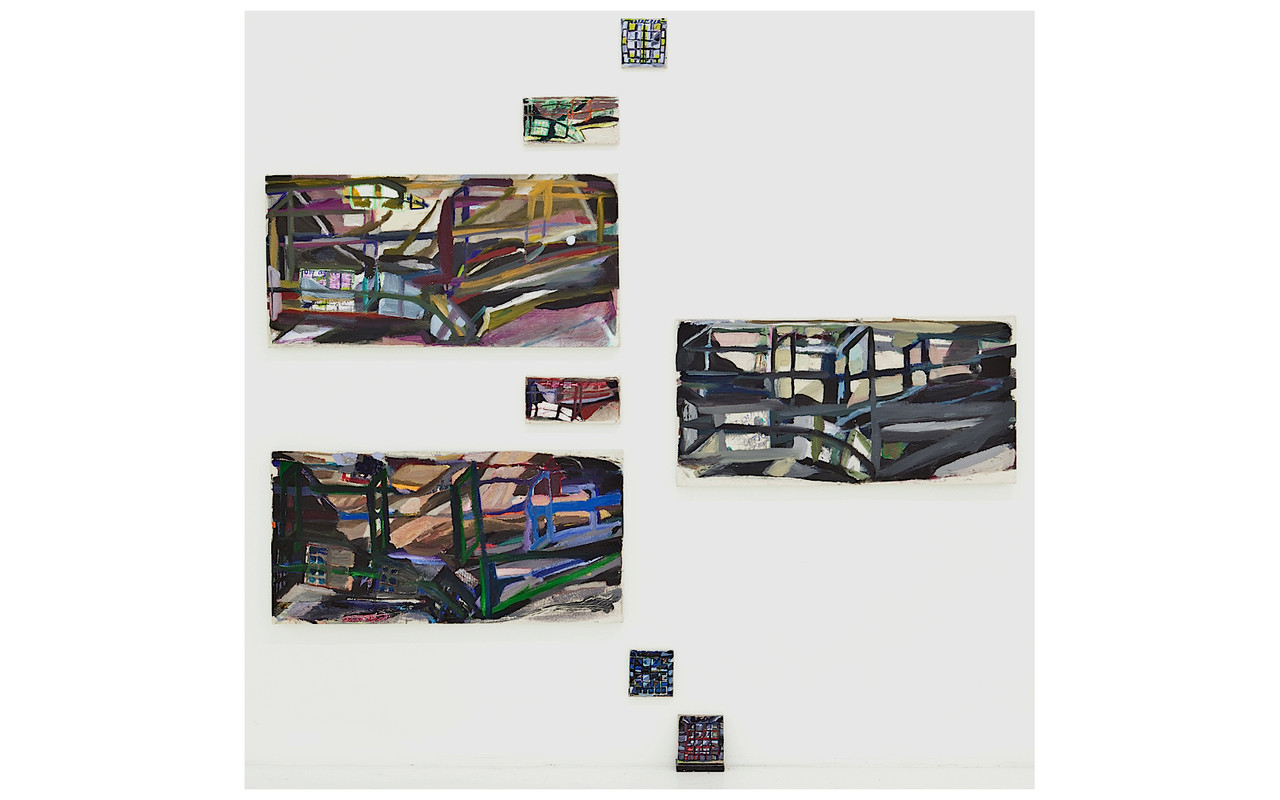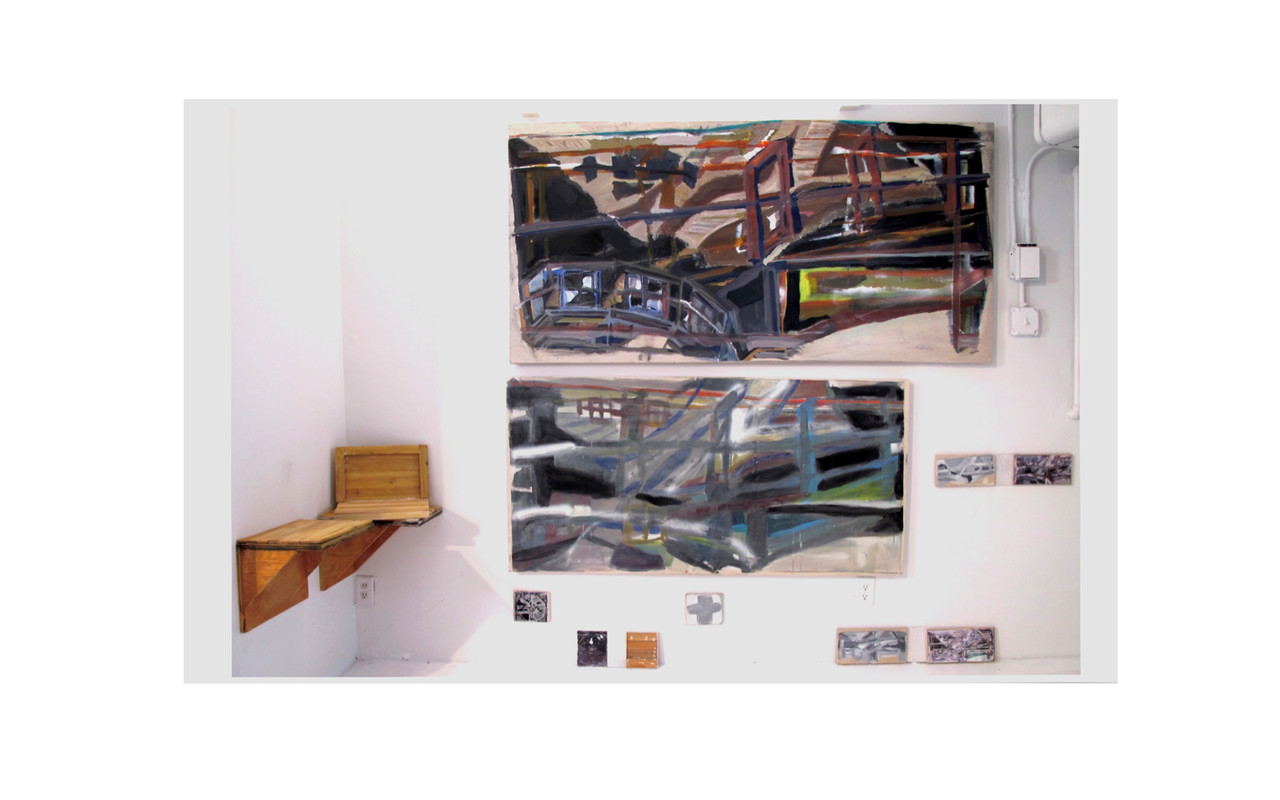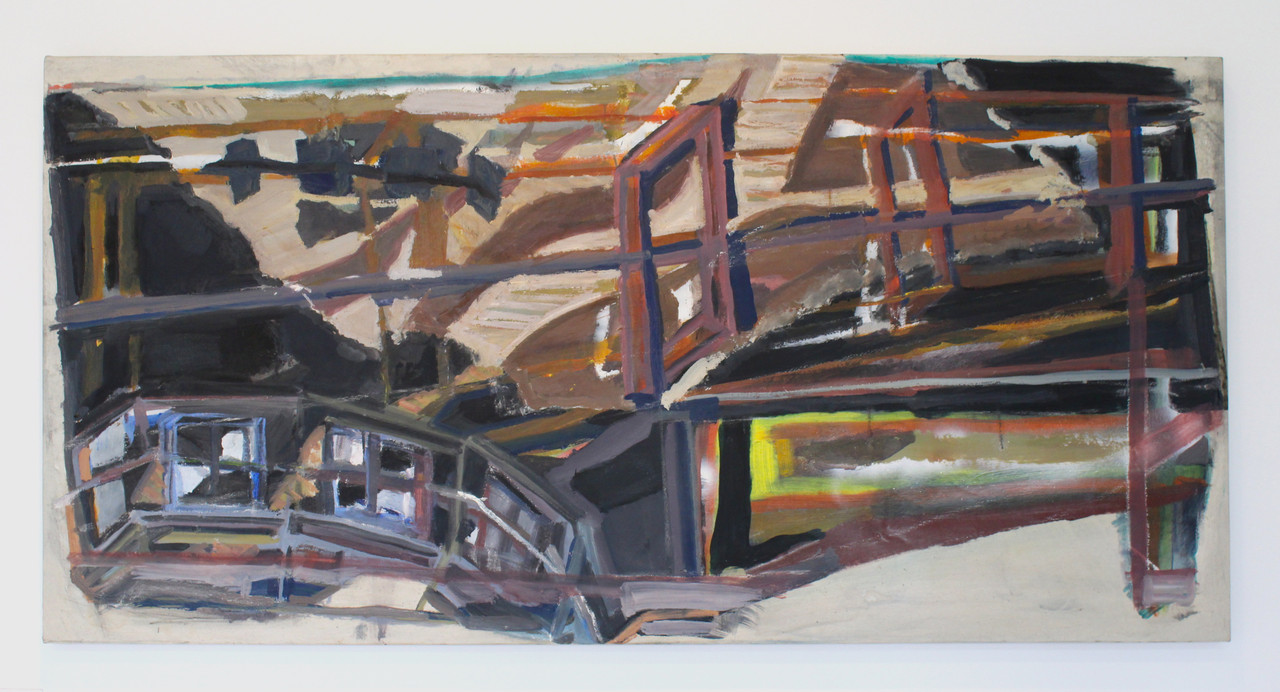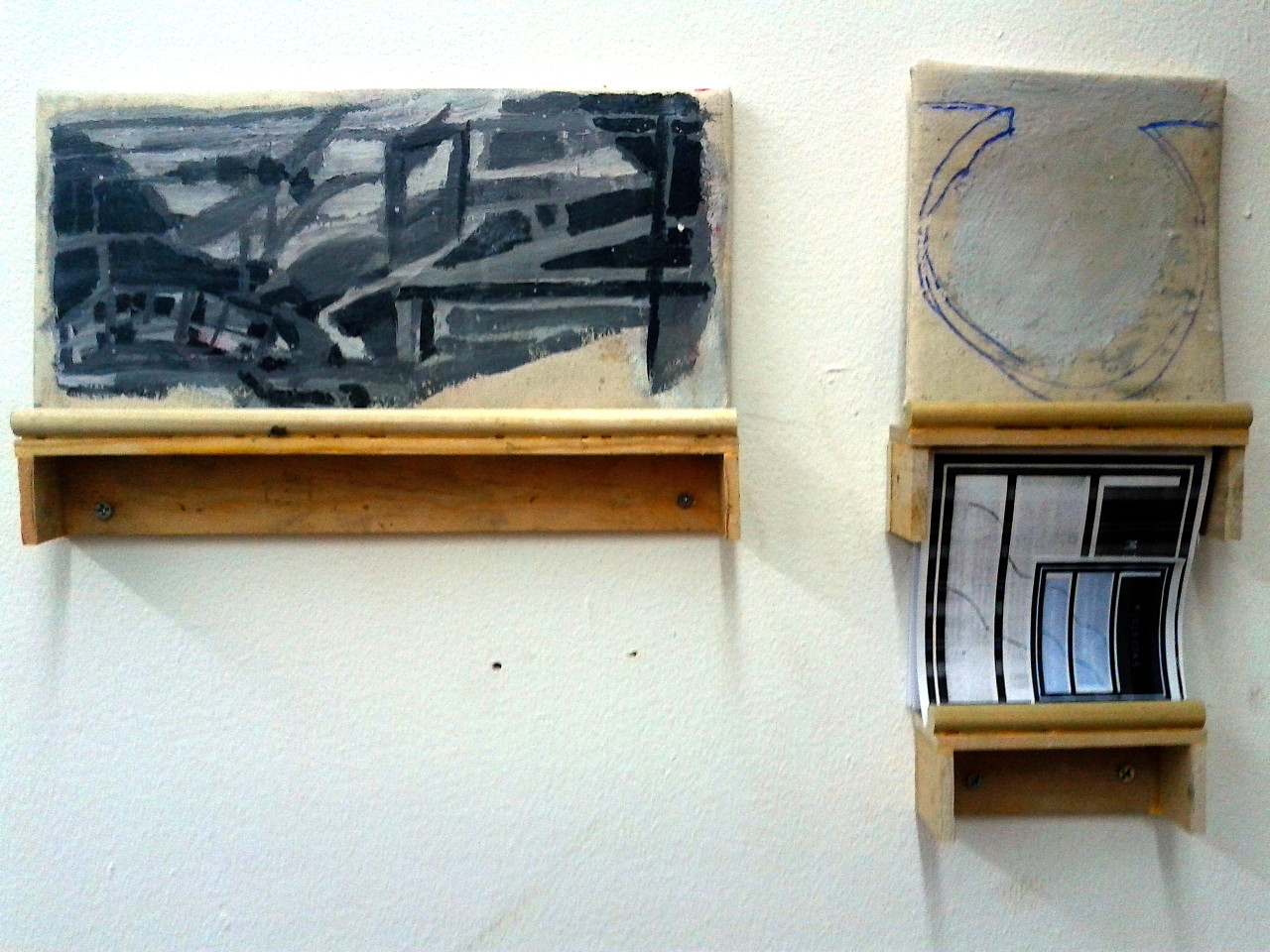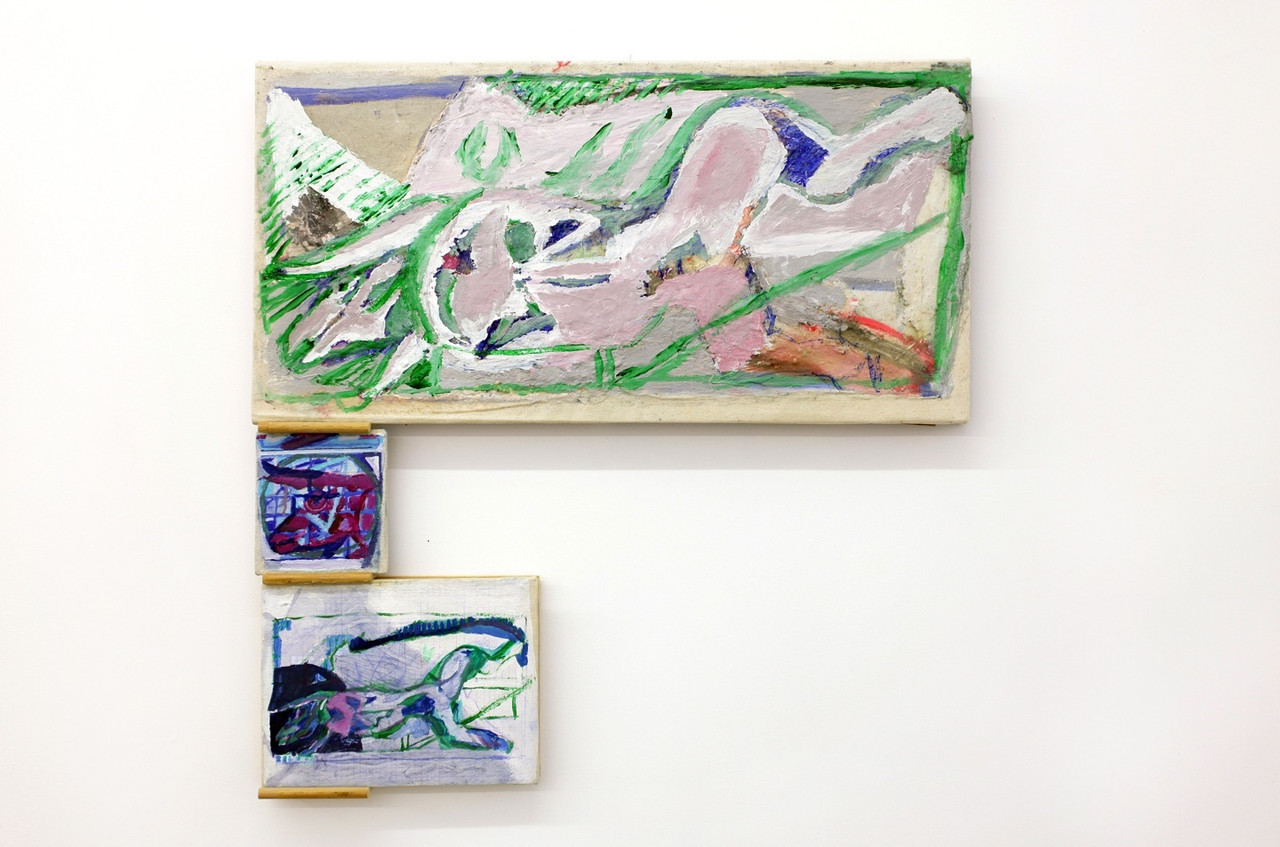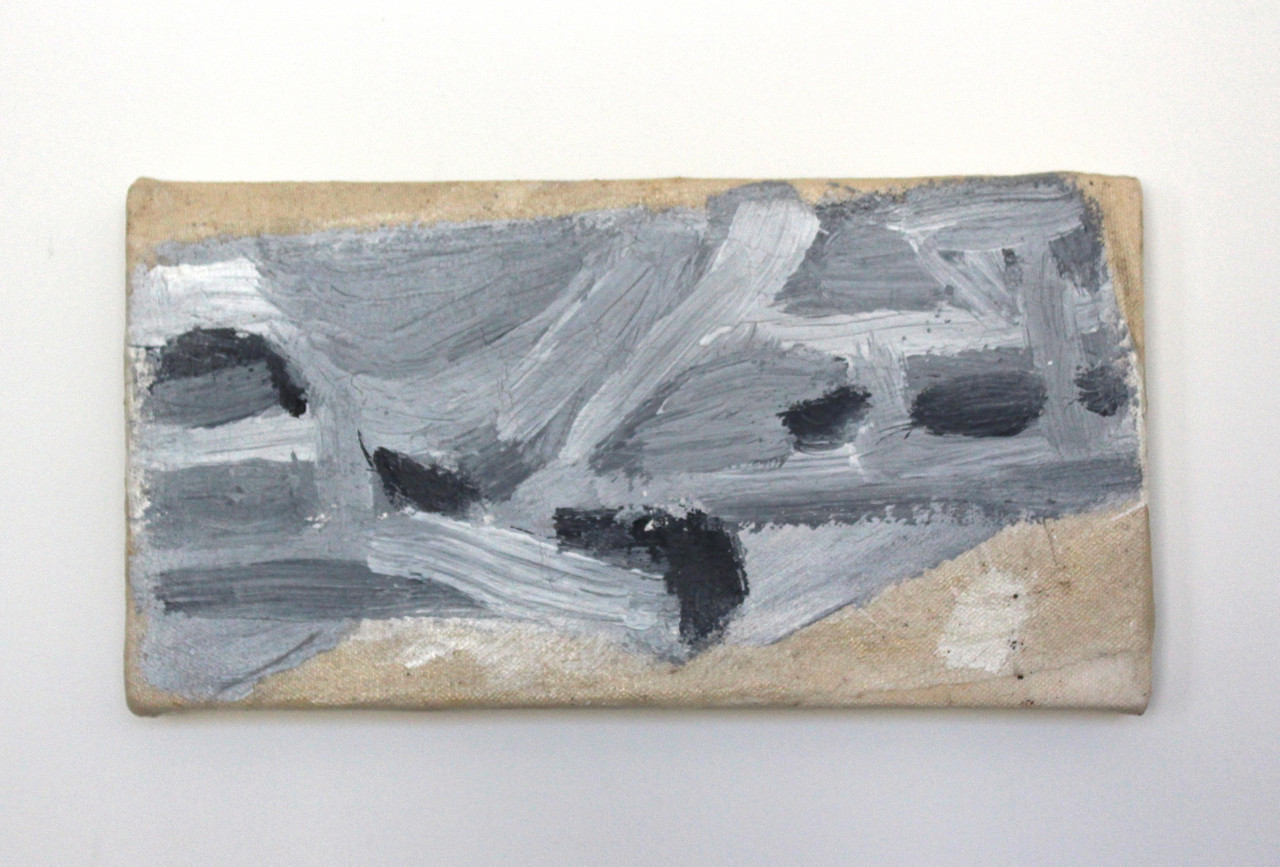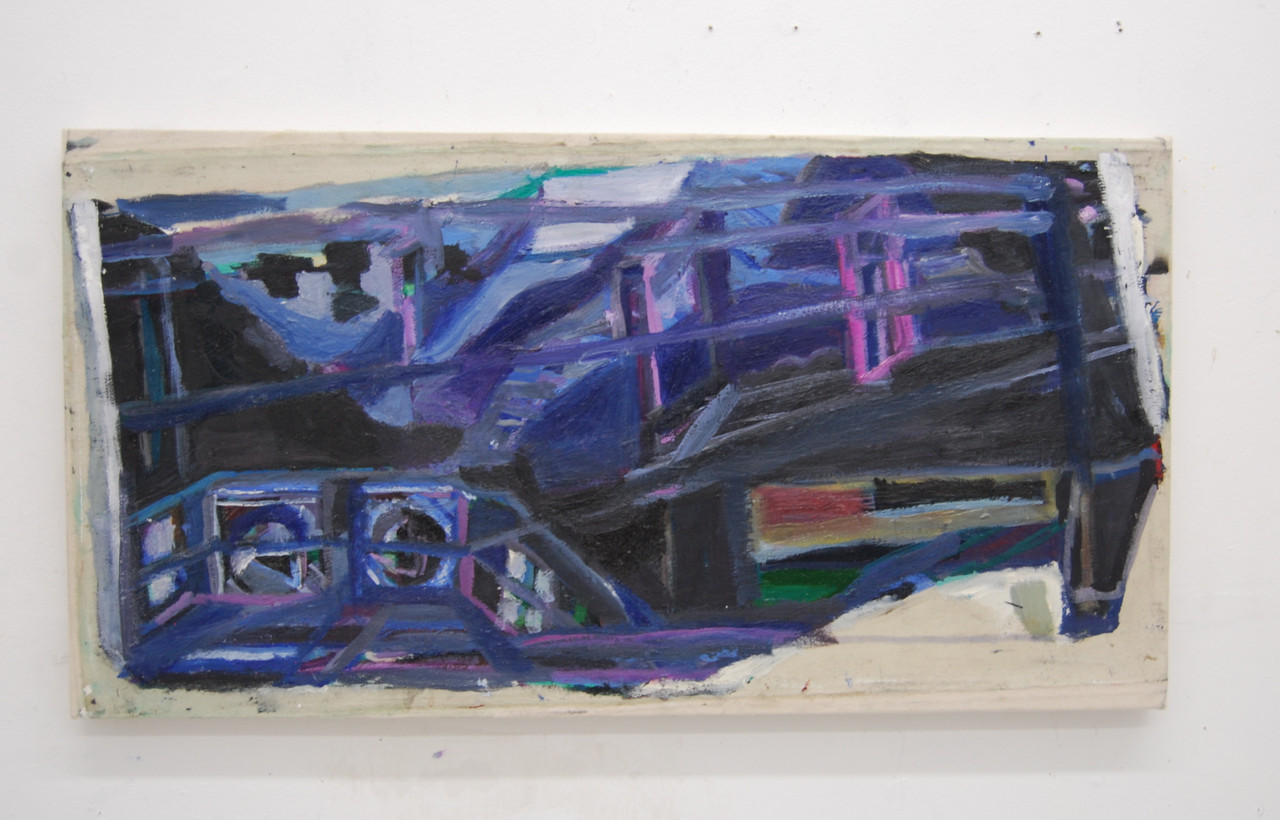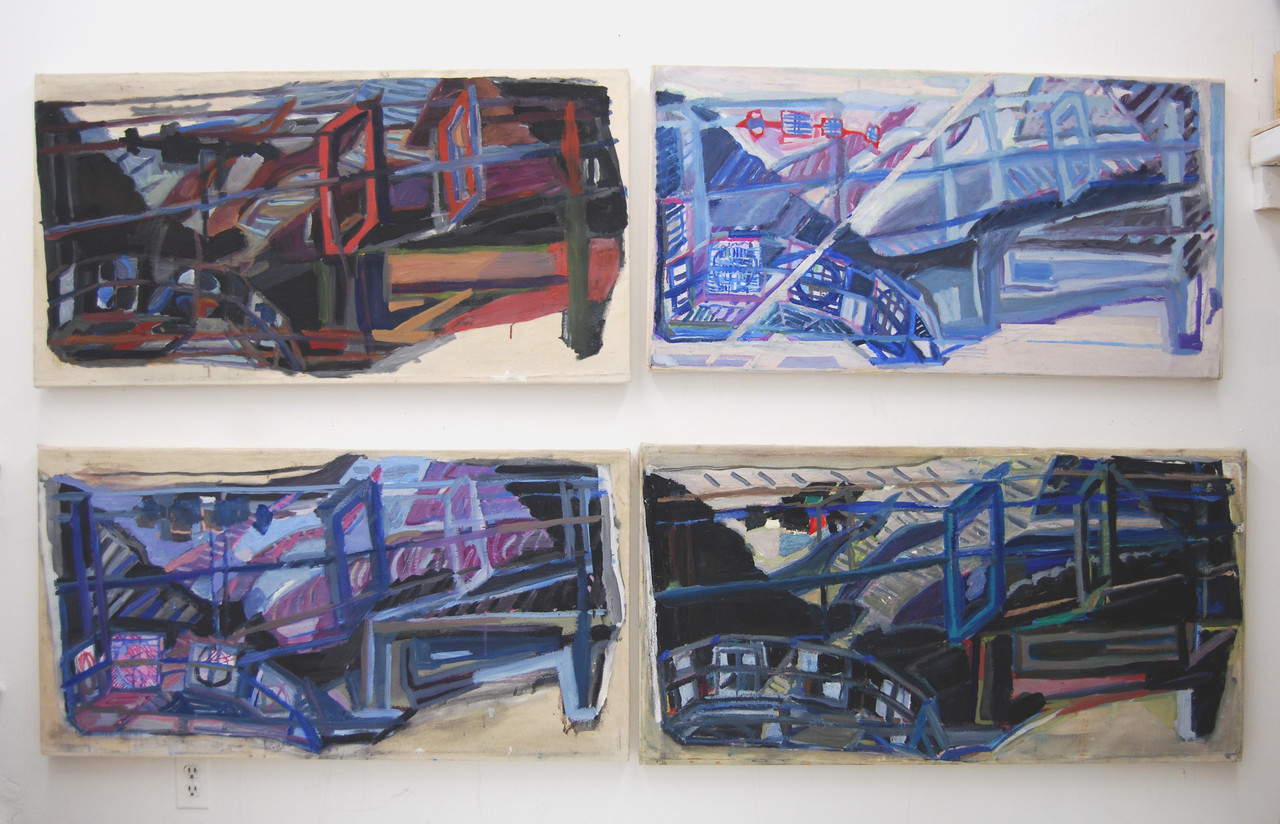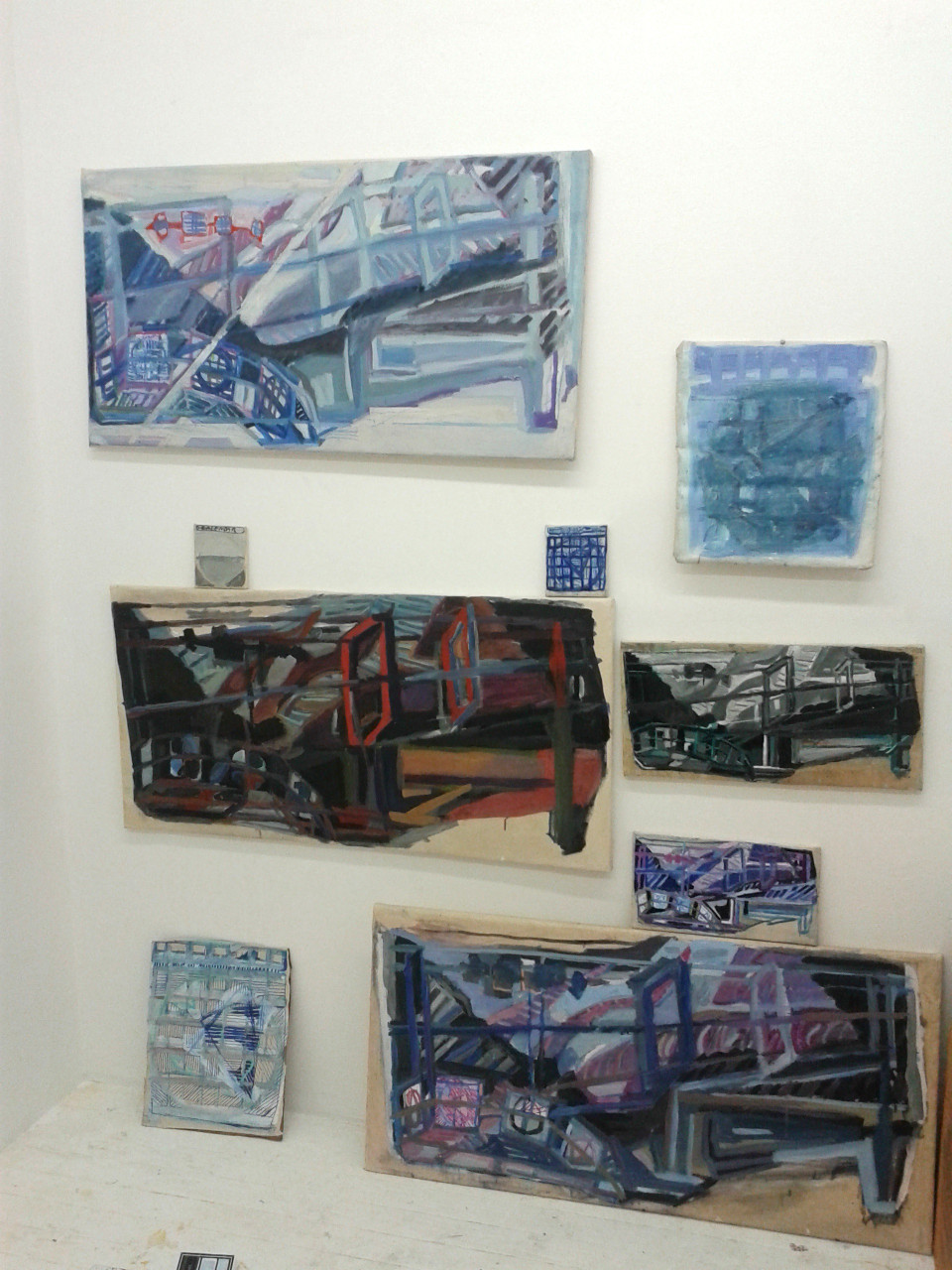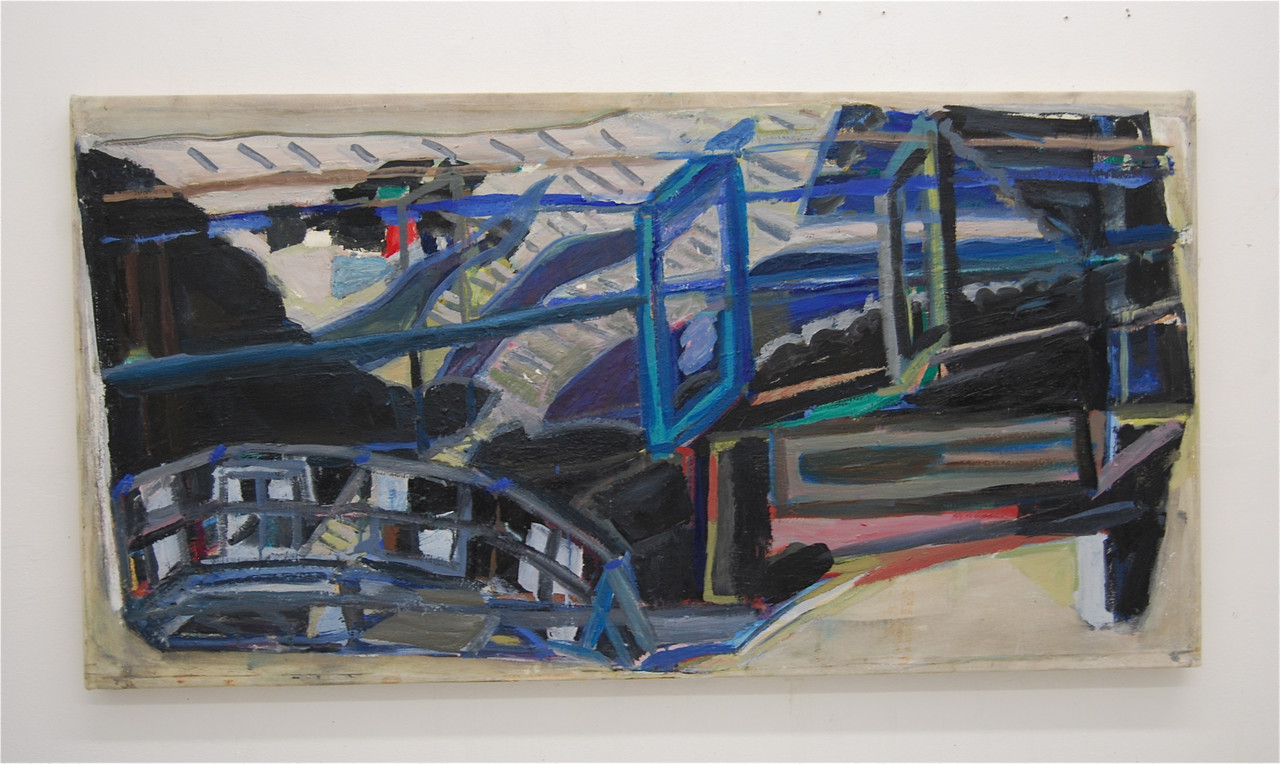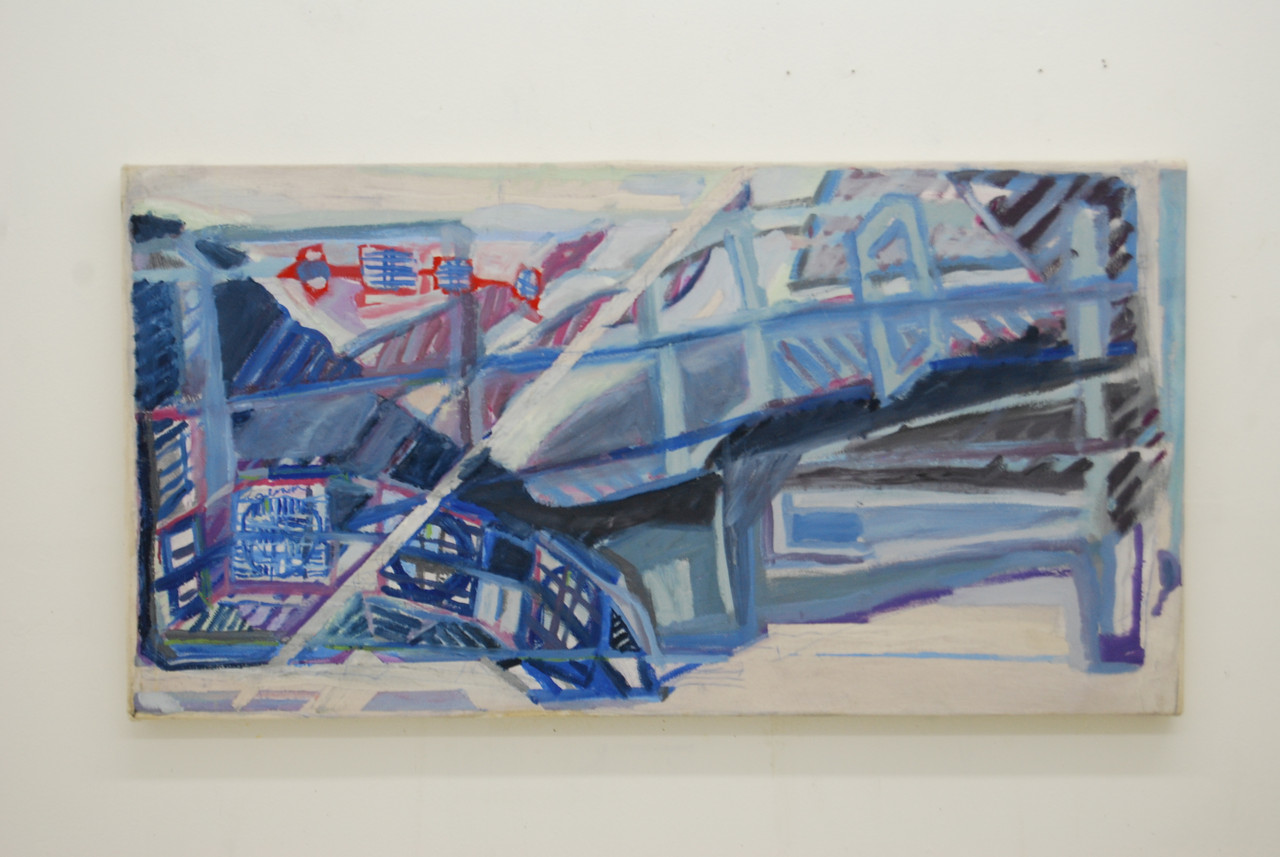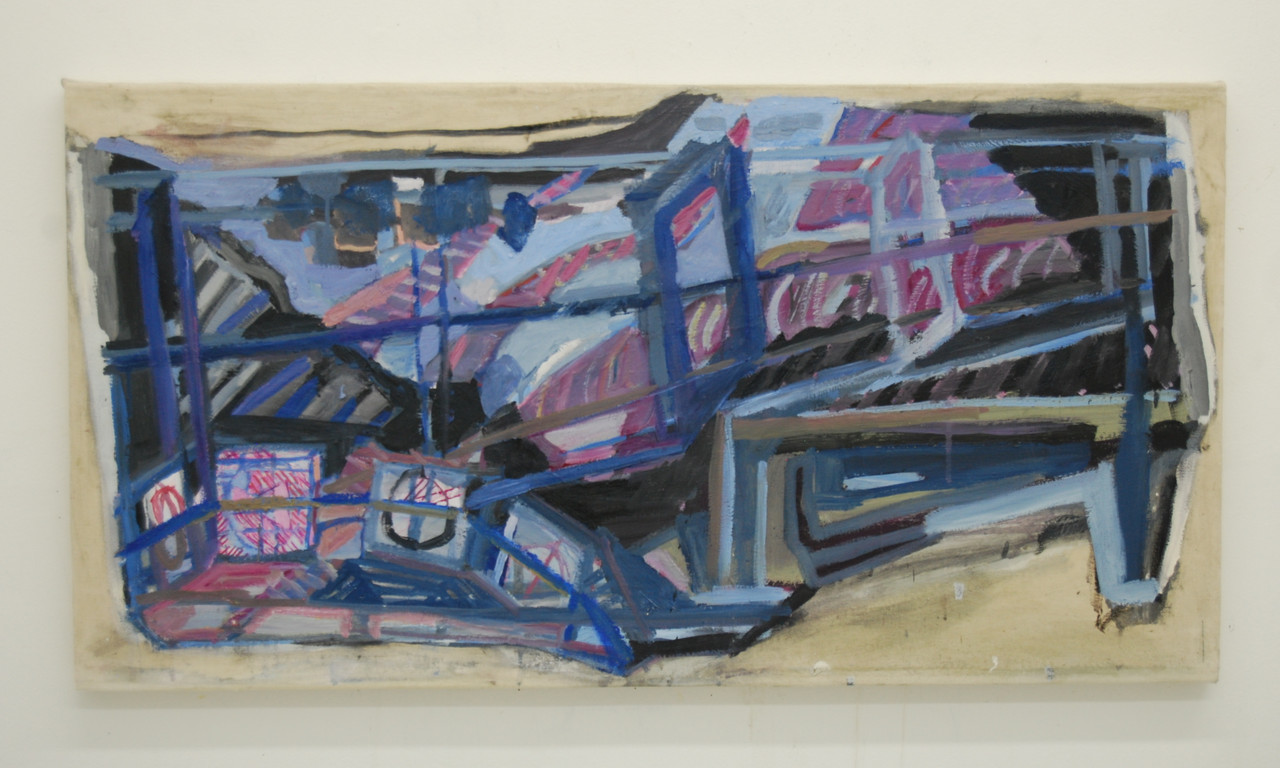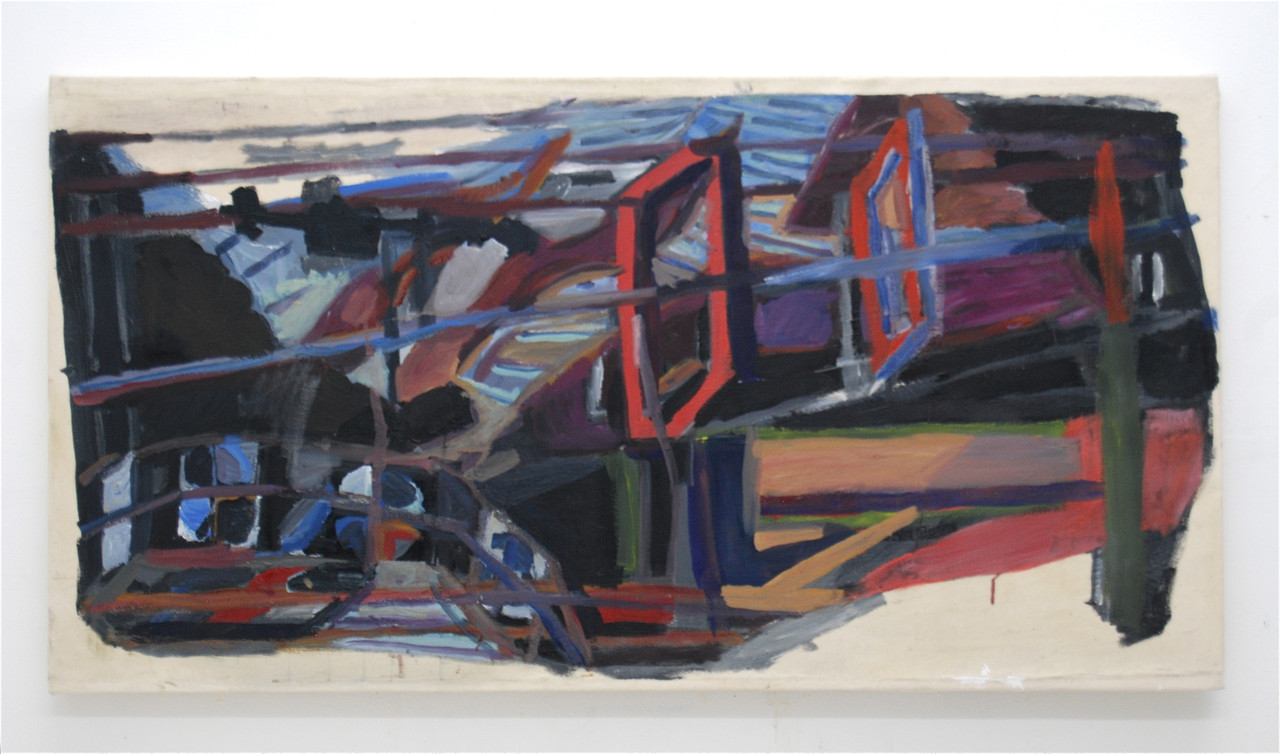What is my work about?
This painting project imagines itself as an investigation of the anatomy of the stretcher as an imaginary relief space. The stretcher paintings are horizontal in dimension and divided into a framing structure consisting of four squares. The bi-focal condition of vision, pulled out from two into four like an anaglyph is one internal reference, and four frames within a film projector is another.
The installation structure of the painting arrangements seeks to establish its own open system: stretcher paintings and square paintings, like snakes and ladders.
For the last year I have superimposed my own rendering of the background of Paulo Uccello’s “Battle of San Romano” onto the “stretcher paintings”: on the left and right side the dark forest creates a two dimensional bowl form, and the hill side in the center creates its own shallow volume.
In the end painting is animistic, certain forms have to be integrated a certain way, in order to activate a “pictorial organism.”
Artist Statement
This painting project imagines itself as an investigation of the anatomy of the stretcher as an imaginary relief space, and simultaneously as pursuing the poetic energy necessary to access installation as an old idea, rather than only a recent one, i.e. the altarpiece.
The 2013-2014 paintings superimpose the background of the London National Gallery’s “Battle of San Romano” by Paulo Uccello onto the background of the “relief stretcher space.” Somehow the “Battle of San Romano” feels poised between the symbolically routinized Medieval world, and the futurist energy with which modern art stated its independence at the beginning of the twentieth century.
My “stretcher form” paintings start initially as canvas folded around irregularly shaped cardboard. In order to understand relief space, I have also been rendering the completed painting forms as small reliefs. The installation structure of the painting arrangements seek to establish their own open system: stretcher paintings and (sometimes) square paintings, like snakes and ladders. I am currently working on integrating painting arrangements as a single work. A recent example in the slideshow is the work “Organism Tracks (After Flayed Rabbit) 2014.”
Before the advent of the stretcher, painting would have been more or less immobile. For example, an altarpiece, it lent itself to a more routinized symbolic function. How would it alter our criteria of paintings if we asked the painting to recalibrate our desired understanding of the symbolic structure of things on an everyday basis.
Organizing pictorial space, happens on material terms, but a parallel intellectual ecosystem lends, “Kant-like purposiveness” to color. Thereby discovering in painting the equivalent “sinewy intentionality” that often characterizes purposeful written language. Color and technical facture are forms of thinking too.
CV
Education
2011 Columbia University, School of the Arts, Visual Arts, MFA
2005 Hampshire College, BFA
Selected Exhibitions
2014
New Dawn, curated by Leidy Churchman, Silberkuppe, Berlin, Germany
2013
The Beauty of Friends Coming Together, Come Together:Surviving Sandy year 1, Brooklyn, NY
Twilight of the Studio Idols, Malraux’s Place, Brooklyn, NY
Hang on to your Hot Lights, Primetime, Brooklyn, NY
2012
Common Senses, Mildred’s Lane at MOMA Studio, NY, NY
Astral Weeks, curated by Van Hanos, Gallery Diet, Miami, FL
Double Session, CTSQ, Long Island City, NY
2011
A Failed Entertainment, Virginia Commonwealth University Fine Arts Building, Richmond, VA
Columbia University MFA Thesis Show, Emily Fischer Landau Center for Art, Queens, NY
Exprist,Temporary Art and Architecture Pavilion, Columbia University NY, NY
2010
Tigers in Red Weather, Neiman Gallery, Columbia University NY, NY
2006
Blip, Flip Quip, Plane Space Gallery, NY, NY
Fellowships:
2012 and 2011 Mildred’s Lane Fellow
Publications
2013 Hang on to your Hot Lights, through ICA Portland, ME and Publication Studios
Press
2012 “Life on Mars” in Miami by Daniel Feinberg

